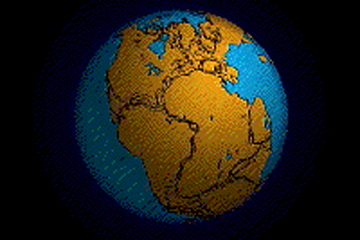Have There Always Been Continents?

They didn't always look the way they do today, but yes, there have always been continents on Earth.
The familiar configuration of the seven official continents spread out over Earth today has undergone many permutations during the planet's 4.5 billion year history.
Many scientists figure Earth began as one huge continent — dry as a bone. Water was delivered in comets, the thinking goes, and then the oceans developed.
Plate tectonics has continually shifted the position of landmasses; while some were rifted apart, creating new landmasses, others collided to create tall mountain ranges, such as the Himalayas, and combine landmasses.
At a few points in Earth's history, all the landmasses were stuck together to form a supercontinent.
The most recent of these supercontinents was called Pangaea, which means "all lands." It began to break up about 200 million years ago, first forming the two supercontinents Gondwana (in the Southern Hemisphere) and Laurasia (in the Northern Hemisphere). Eventually these two supercontinents also fragmented, forming the continents as we know them today.
Get the world’s most fascinating discoveries delivered straight to your inbox.
Though scientists have a good deal of geological evidence for Pangaea (patterns of sea-floor spreading, similar rock sequences on different continents and the jigsaw puzzle-like edges of the continents), there are still questions about what exactly Pangaea looked like and how its various components fit together.
Less well-known are the supercontinents that are thought to have existed before Pangaea. One such example is Rodinia, the supercontinent though to have existed around 1.1 billion years ago; it began to break apart 800 million to 600 million years ago.
Geologists call this continual breaking apart and coming together of the continents the supercontinent cycle.
And that cycle is likely still going. The continents are still on the move, drifting apart at the rate of about an inch each year, typically spreading in mid-ocean. The movement, and all the bumping and grinding it causes as plates dive under continents, creates earthquakes, fuels volcanoes and builds mountains. As they gradually move over millions of years, the continents as we know them today could crash together again to make yet another supercontinent, scientists say.
Follow Life's Little Mysteries on Twitter @llmysteries. We're also on Facebook & Google+.




